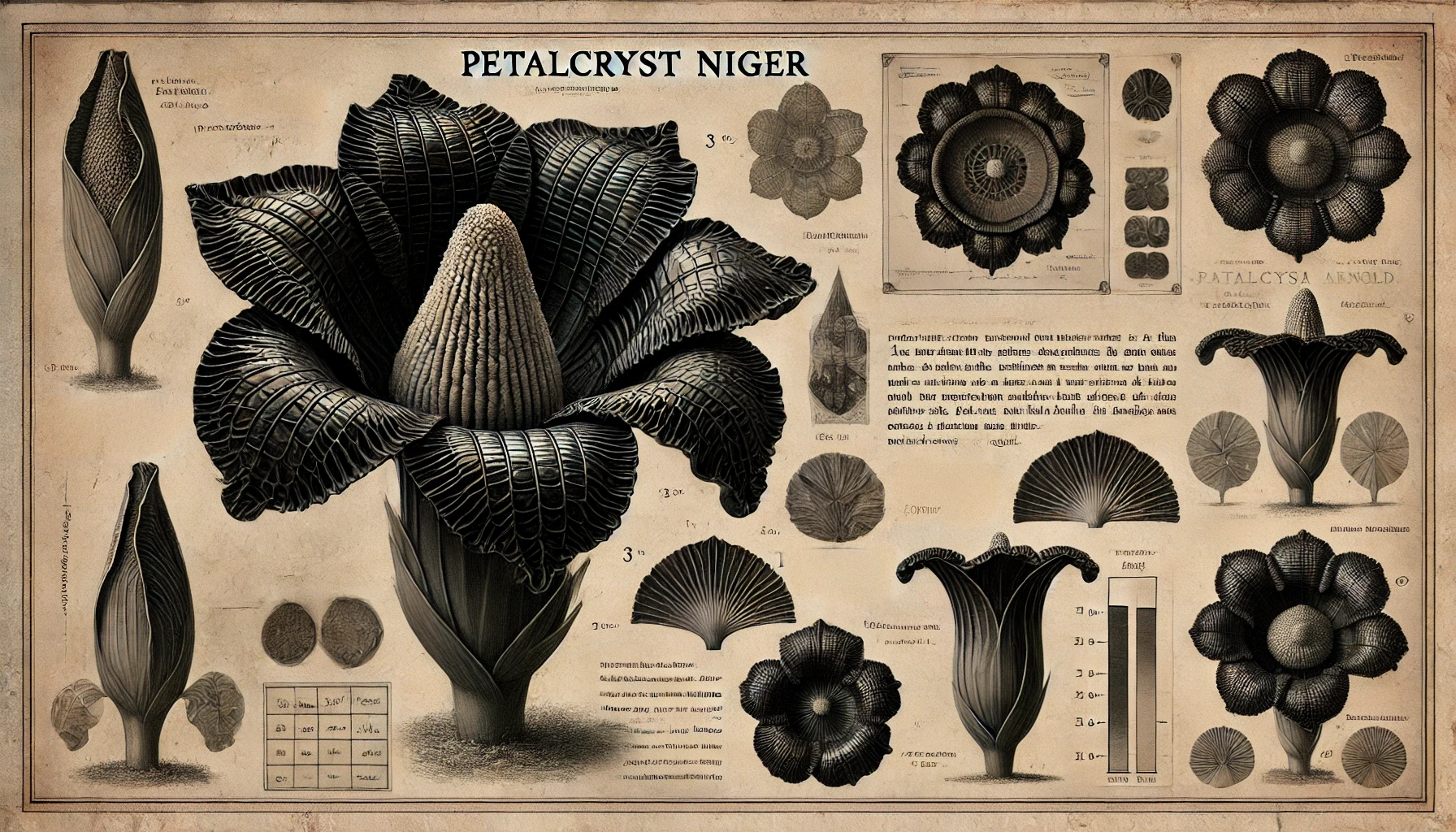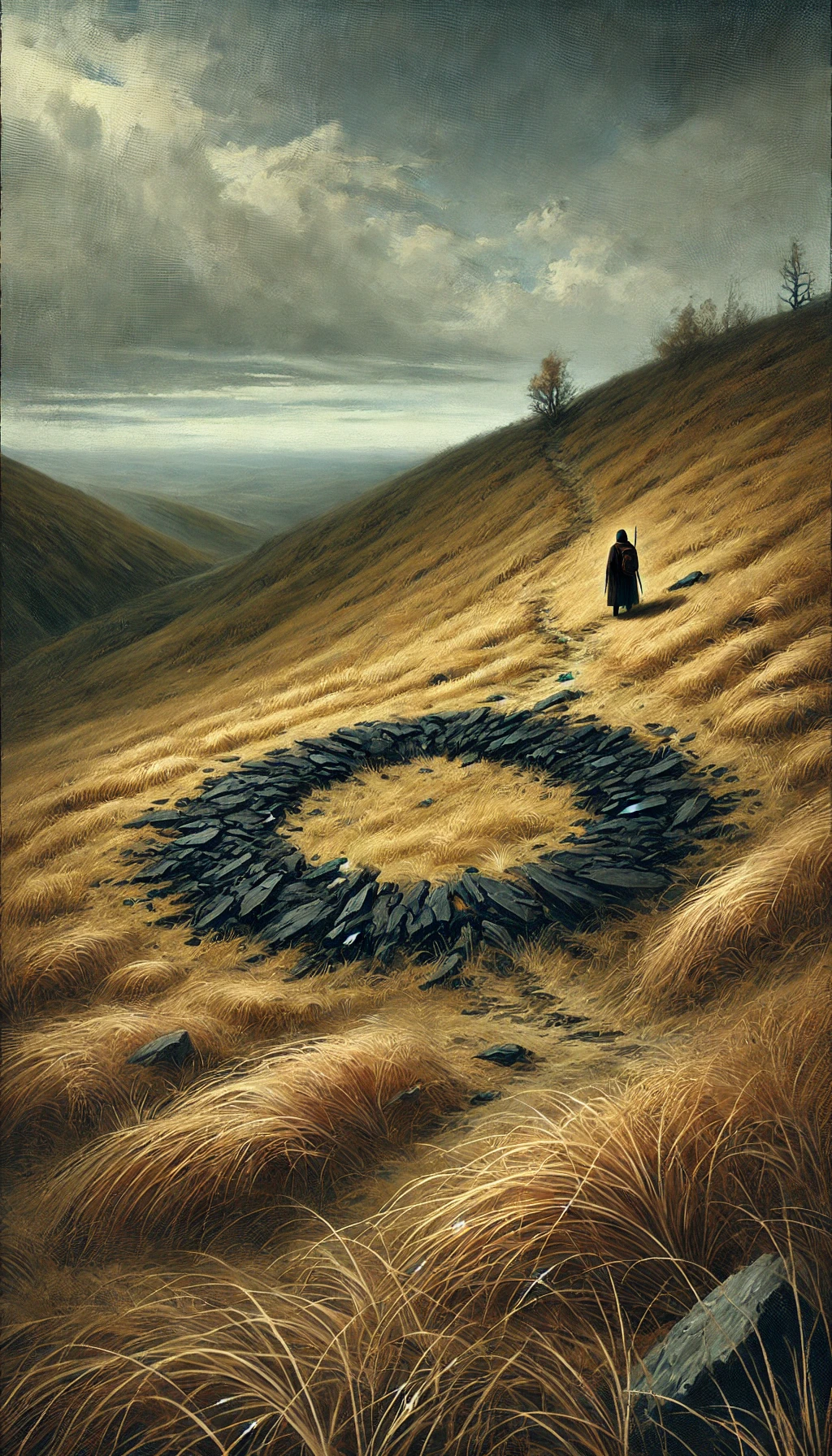Phenomenon Profile
Obsidian Bloom is a glimmering contradiction—a flower forged in stillness and silence. Its clustered petals resemble shards of black glass, razor-thin and crystalline, but unnaturally delicate. On moonless nights, the petals refract ambient starlight, casting flickering, prism-like glints that move even when the air is still. The plant hums—though not in any audible register. Sensitive listeners describe a pressure behind the ears or a faint internal vibration, like the after-ring of a tuning fork. Those with planar sensitivity have reported hearing whispers layered with harmony: not words, but tones beyond human expression. Despite its sharp appearance, touching the bloom produces no pain—only a sensation of hollow cold, like the void left behind after heat departs.Origin and Emergence
The Obsidian Bloom is found only where the boundary between planes has fractured but not torn—places of residual instability where no other plant life can grow. Its seeds are undetectable, often laying dormant for decades or longer. Germination requires more than soil and water—it occurs only during precise planetary alignments, when gravitational patterns shift just enough to “awaken” the inert seed with a silent call. No evidence suggests these alignments can be predicted. The plant is immobile and must not be moved. Attempts to transplant or re-pot it result in instantaneous decay—not rot, but disintegration, as if the bloom was never meant to survive separation from its origin site.Interaction and Risk
Obsidian Bloom is one of the most dangerous Cosmic plants to approach casually. Even without physical contact, its presence begins to thin the boundary between self and surroundings. Symptoms of overexposure include:- Loss of bodily weight perception.
- Echoes in personal memory.
- Disinterest in speech or physical needs.
Usage and Preparation
Harvested only under full eclipse or total darkness during solstice, the petals are cut with obsidian knives and handled only with ritually bound gloves. The crystalline bloom must then be stored in sealed obsidian containers, which dampen both its physical resonance and its psychic influence. When dissolved into an elixir using mirrored water and meteoric dust, the resulting potion creates a momentary unmooring of the mind from linear thought. The effect is not a hallucination, but a true perception of adjacent planar echoes. In the hands of trained druids, it may allow:- Communication with nonmaterial intelligences.
- Partial memory recovery from soul fragments.
- Brief glimpses into realms beyond time.
Records and Rumors
The elven glyphs near ancient Obsidian Bloom growth sites are always the same: a circle within a circle, and the phrase “The petal cuts both ways.” One Guardian field log from before the Exile notes: “It grows where nothing should—but perhaps where something once was.” Druids call it the Listening Bloom and never speak while in its presence. Rituals involving its use are silent, held under shadow, and always involve a circle of seven.The Black Chalice Pact
They were called the Circle of Ashveil. Quiet scholars, star-watchers, and spiritbinders—respected, if eccentric, among the Druidic Order. Their downfall began with a rare double solstice eclipse, an event calculated centuries in advance but long dismissed as unlikely. The Circle claimed this moment would produce a triple convergence—where three celestial layers aligned perfectly over a fixed terrestrial point on the Windwhisper Steppes, a place known more for dry stone ridges than for magic. In secret, they journeyed there.In silence, they performed a rite.
They did not ask permission.
They took an Obsidian Bloom in full crystal, still humming, and steeped it in a chalice carved from blackened antler and obsidian shard. There were no chants. No flame. Only the shifting glow of the bloom’s light and the steady silence of seven hooded figures. What they summoned—or bargained with—is unknown. But when they returned, something had changed. They bore no signs of aging. Their breath steamed even in summer. Their voices faltered, and their shadows did not always match their movements. When asked what had occurred, the eldest replied only: “We understood. That was the pact.” The Druidic Order expelled them within days, stripping their names from the living record. The rite was branded a breach of natural law, a willful surrender of human boundaries. One high elder wrote: “To drink from the black chalice is to cease walking among us, even if your feet still touch the ground.” The Circle of Ashveil has not been seen since, but every few years, someone reports finding an obsidian shard circle burned into the grass after a solstice eclipse. No footsteps ever lead to it. None lead away.



Comments